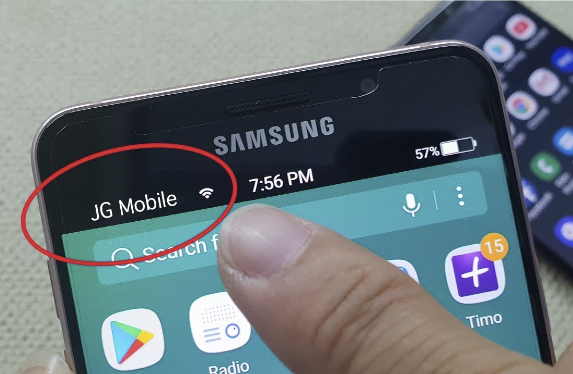Sub-brand, MVNO, virtual mobile brand... what is the difference?
In the telecommunications domain, you may hear people talking about a virtual mobile brand as a mobile operator sub-brand, an MVNO (Mobile Virtual Network Operator), or white labelled mobile brand. The question is:
Are all of these mobile brands the same?
How is the commercial relationship structured?
What does it look like from a technology perspective?
Firstly, what is a Mobile Virtual Network Operator (MVNO)?
An example
There is a supermarket chain down the street, called “Joe’s Groceries”. This business has a few stores and sells all the expected items one would expect at a supermarket. Joe’s Groceries have some home-brand products that have their own branding. Joe’s Groceries currently sells SIM cards for several carriers. Joe’s Groceries would like some home-brand SIM card packs with their own branding and logo. They will call it “JG Mobile”.
For Joe’s Groceries to sell their own SIM cards, he will need to speak with a mobile network wholesale partner such as IMZI, who will create a mobile brand called “JG Mobile” on a country-wide carrier, for minimal cost, in a matter of weeks. A mobile network wholesale partner can also be called a mobile virtual network aggregator (MVNA).
Now, Joe’s Groceries has its own mobile virtual network for JG Mobile, the SIM cards can be bought and used by their customers. For their customers, it’s like Joe’s Groceries have their own cell towers and mobile network, and their phone says “JG Mobile” as the network name. Amazing!
Having an MVNO as an addition to your existing business builds brand trust and loyalty. Joe’s Groceries enjoys the additional revenue that just a small number of mobile users will create.
Dollars and cents
From a commercial perspective, Joe’s Groceries will have an initial onboarding expenditure which includes their first batch of branded SIM card packs, and a wholesale agreement that is designed for maximum flexibility and ease of profit for the mobile brand.
The wholesale agreement will simply charge a percentage of the total monthly recharge per customer. The rest is profits for the mobile brand.
And the tech
Underneath the hood, there is an entire platform that connects to the mobile network to enable the SIM cards. These systems cost tens of millions of dollars to develop and typically hundreds of thousands or millions to integrate.
Luckily, all of this infrastructure is already in place and ready to onboard brands. The IMZI service runs on the Isoton platform, which can be fully integrated into a mobile network operator (MNO) network in less than 10 weeks.
The “JG Mobile” brand is created on the mobile virtual network enabler (MVNE) platform within a few weeks and is a fully functioning mobile brand capable of competing with the big players.
What is a mobile operator sub-brand?
Underneath the hood, a sub-brand is simply an MVNO, but it is owned by the host operator.
An example
Each country has at least one mobile network operator (MNO), some examples include Vodafone or T-Mobile or Bharti Airtel or Orange. These massive companies own their own radio access network (cell towers etc) and core network infrastructure, which totals to billions of dollars of expenditure and takes many years to deploy over a geography.
Typically, a MNO has one brand on their network, and that would be called, for example, “Vodafone”. The main brand’s goal is to build a broad range of products that can suit the largest chunk of the market available. This is the best possible strategy for MNOs, however, they can miss out on customer’s who don’t vibe with the one brand.
If there are millennials who want a telco brand that is a techie and cares for the environment (like our Felix Mobile brand), Vodafone might lose them to another carrier.
You can’t cater for everyone, and some niche markets are hard to target as your entire brand message will need to change. That is why sub-brands are absolutely genius. They are a completely separate brand, different look and feel, and distinct mobile products. As a customer you cannot tell that sub-brand is not an actually network operator.
Dollars and cents
For sub-brands, the commercials are incredibly simple. The network operator would usually create an internal cost-center or account to track their sub-brand’s performance. No wholesale agreement is required because it’s a network operator owned brand.
And the tech
The big mistake that some MNOs make when launching a sub-brand, is to use their existing MNO system and copy existing products. That is not a sub-brand!
Sub-brands need to have a completely different look, feel, and vibe when compared with the host-brand. For this, MNOs turn to an MVNO platform as per above.
Launching a sub-brand on a mobile operator network can be a time-consuming and expensive process. For MNOs with the IMZI solution, a sub-brand can be launched in weeks.
What is a virtual mobile brand and a white labelled mobile brand?
When someone is talking about a “virtual mobile brand” or a “white labelled mobile brand”, they would may mean an MVNO brand, as mentioned above. But! There is a small chance they could be referring to a sub-brand.
Best is to ask “Are you talking about an MVNO or a mobile operator sub-brand?”. If they don’t know, you can now help educate them!
One more!
Branded resellers are worth mentioning. This is a company that simply has SIM cards from a mobile operator with their branding, however, their customers are onboarded directly on the host operator - there is no branded user experience.
We hope that clears up any confusion on what these similar terms mean in the telco world. If you would like to launch your own MVNO brand, or if you are an MNO and are interested in having the IMZI MVNO solution on your network, get in touch with our experienced team.
Consider signing up for our mailing list for more IMZI Insights:

